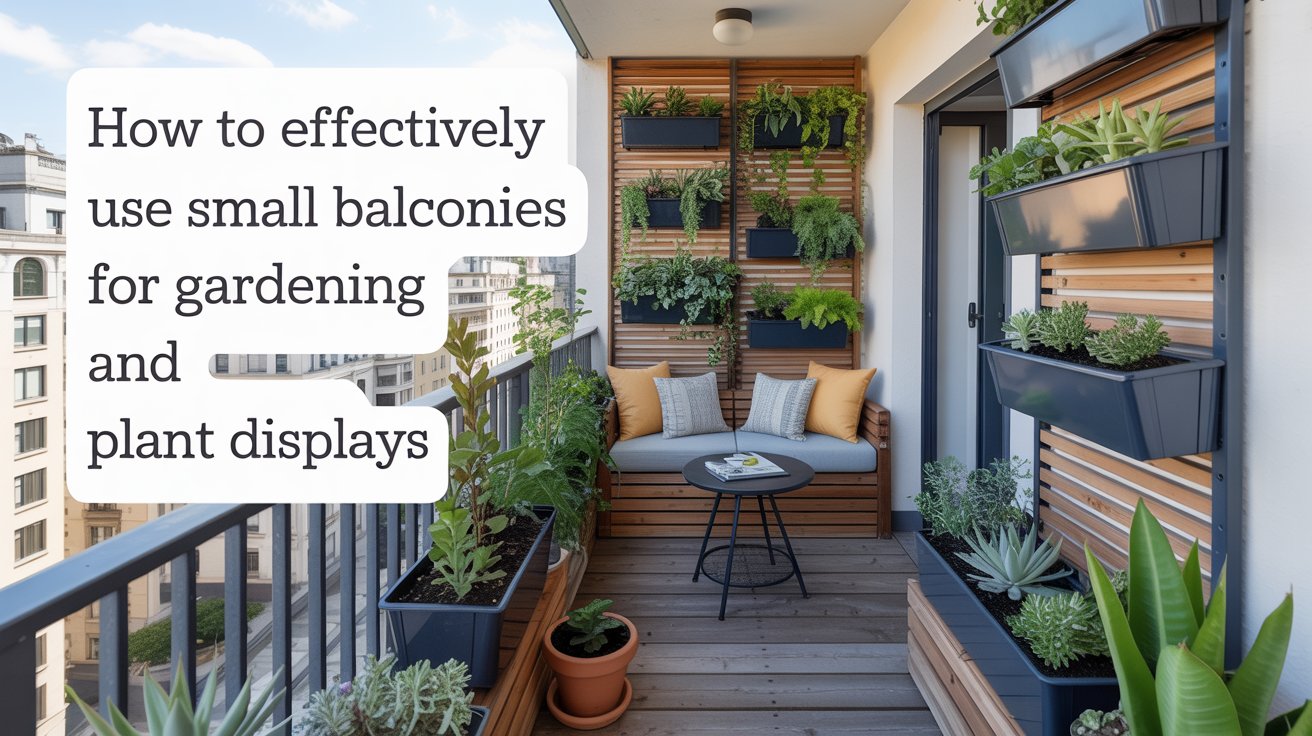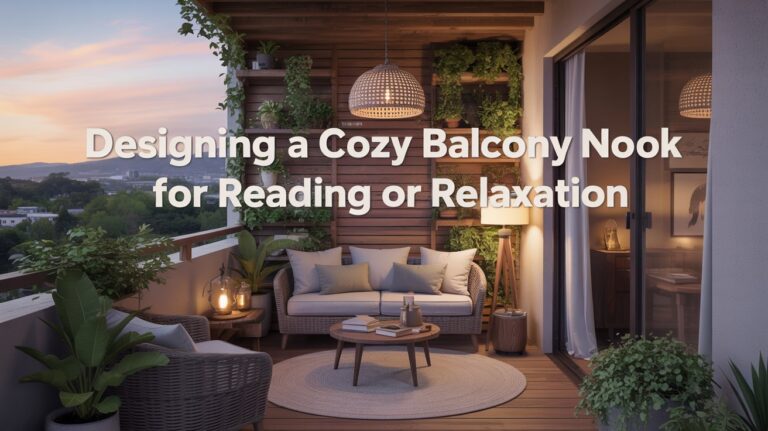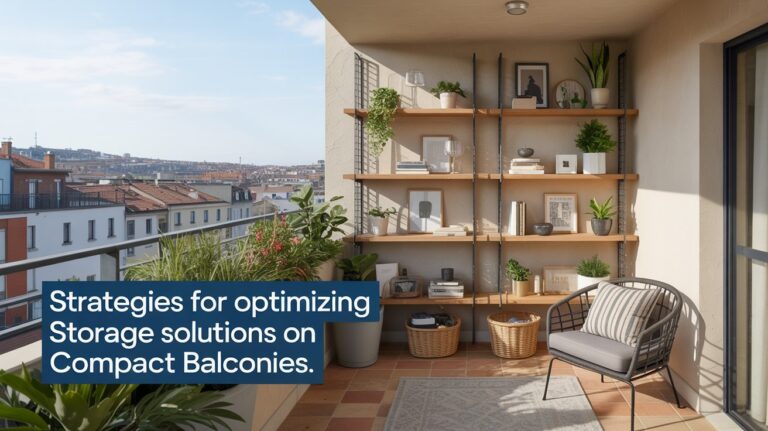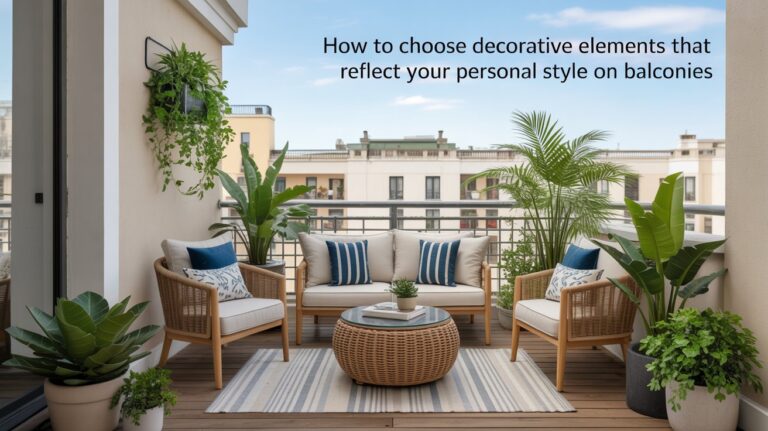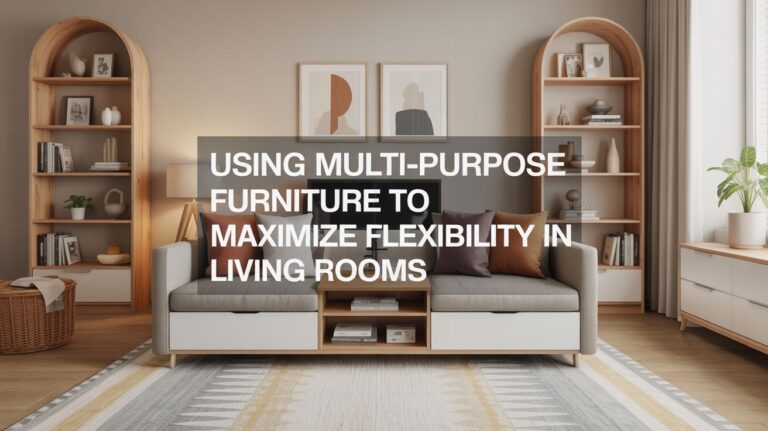How to Effectively Use Small Balconies for Gardening and Plant Displays
I have been, or can be if you click on a link and make a purchase, compensated via a cash payment, gift, or something else of value for writing this post. As an Amazon Associate, I earn from qualifying purchases. Please read my full Affiliate Disclosure for more information.
Maximize a small balcony by carving distinct micro-zones: a compact seating nook, a herb corner, and vertical displays along walls or railings. Use lightweight, weatherproof containers and wall/rail planters to free floor space, and choose compact, low-maintenance plants that suit sun or shade. Layer textures and colors with reflective planters and seasonal mulch. Add hidden storage and simple DIY vertical shelves to keep tools tidy. With smart lighting and easy upkeep, your green balcony awaits more tips soon.
Key Takeaways
- Create distinct zones (seating nook, herb corner, vertical displays) to maximize usability and flow on small balconies.
- Use vertical planters, railings, and wall shelves to maximize growing space without crowding.
- Choose compact, low-maintenance plants (herbs, small flowers, succulents) suited to container sizes and light conditions.
- Opt lightweight, weatherproof containers (fiberglass, resin) and consider self-watering or collapsible options for ease.
- Implement hidden storage and multi-level organization (hidden drawers, magnetic strips, vertical shelving) to keep tools tidy and accessible.
Maximizing Vertical Space With Wall and Rail Planters
Hangding more plants up high is the smartest way to make the most of a tiny balcony. You’ll maximize vertical space with wall and rail planters, placing light, thirsty, or seasonal herbs up top and sturdier plants below. Choose modular wall planters that clip or stack for easy rearrangement, and use rail boxes to keep edges tidy. Attach lightweight, weatherproof garden art and compact outdoor furniture around the layout to define zones without crowding. Watering becomes simpler with drip lines or self-watering inserts. Remember airflow and sunlight; rotate specimens to prevent shade competition while preserving visual balance.
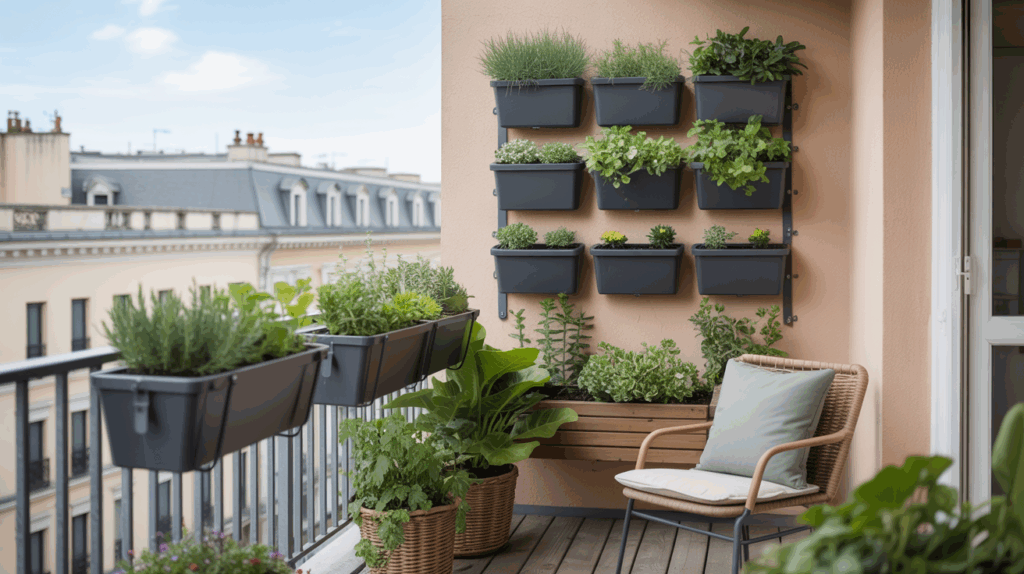
Choosing Compact, Thriving Plants for Small Balconies
Start with compact plant choices that fit your balcony space without crowding. Explore dwarf varieties that stay tidy and bloom reliably, and plan for light and container size to keep them thriving. You’ll balance sun, airflow, and vertical options to make every inch count.
Compact Plant Choices
Small balconies demand plants that stay compact while still delivering color and vigor, so start with runners-up and dwarf varieties, plus a few trailing candidates to maximize vertical space. For quick impact, choose compact perennials and annuals that tolerate containers, like short-leaf herbs and small flowering cultivars. Think succulent arrangements for low water and structural texture, paired with aromatic herbs for scent and flavor. Opt for multi-branching forms that fill space without sprawling. Use vertical planters, railing boxes, and hanging pots to extend coverage. Prioritize soil that drains well and regular, moderate feeding for healthy, thriving displays.
Dwarf Varieties Essentials
Choosing compact, thriving plants for small balconies means narrowing in on true dwarf varieties that stay neat yet deliver color and texture. You’ll prioritize dwarf varieties that don’t overpower shelves or rails, keeping plant size manageable on limited space. Look for compact growth habits, slow spread, and sturdy stems that tolerate wind and sun. Pairing short, dense foliage with bold flowers adds visual impact without crowding. Consider container size, root depth, and watering needs to maintain tidy, thriving displays. With careful selection and regular pruning, your balcony becomes a cohesive, colorful scene that respects size limits while delivering charm.
Light and Space Tips
Even with limited space, smart light planning makes compact plants thrive: choose varieties that tolerate full sun to partial shade and place taller items to the back or corners, so you don’t crowd pathways or railings. You’ll want compact cultivars with dense growth and slow spread, so interior lighting helps you monitor thriving conditions without crowding. Assess your balcony’s sun pattern across morning and afternoon hours, then group sun-loving and shade-tolerant plants accordingly. Pair plants with appropriate balcony furniture for easy maintenance. Use reflective planters to maximize light, and rotate pots weekly to equalize exposure for healthier, thriving displays.
Lightweight Containers That Don’t Compromise on Style
Lightweight containers bring flexibility to balcony gardens without sacrificing style. You don’t need heavy layouts to enjoy green life; you can move, rearrange, and replant with ease. Look for lightweight planters that still look polished, and favor durable materials that resist weather. Choose stylish containers that complement your space and plant choices. Here are ideas to contemplate:
- Decorative fiberglass pots
- Resin or bamboo-look options
- Ultralight ceramic replicas
- Collapsible fabric planters for seasonal shifts
- Self-watering styles for effortless care
Layering Textures and Colors for Year-Round Interest
Layering textures and colors makes a small balcony feel rich and inviting year-round. You’ll build depth with textural layering: mix matte leaves, glossy pots, and airy grasses to catch light from different angles. Pair cool greens with warm neutrals, then punctuate with a repeating accent color to unify areas. For year-round interest, vary plant heights and leaf shapes, and rotate containers seasonally. Practice color scheming: map contrasts, then adjust as light shifts. Keep a restrained palette; subtle shifts prevent chaos. Label combinations that work, and reuse favorites. Your balcony becomes a curated, harmonious micro-garden you can enjoy daily.
Smart Lighting Solutions for Small Outdoor Spaces
Smart lighting transforms a small outdoor space by expanding its usable hours and shaping mood without crowding the area. You’ll get practical, pocket-friendly options that highlight plants and seating with minimal footprint.
- solar powered lights that charge in daylight and glow softly after sundown
- LED string lighting for flexible, ambient coverage along railings or trellises
- motion-activated lanterns to boost safety without constant lighting
- programmable timers to align with your schedule
- color-temp options to match plants, decor, and mood
Keep wiring simple, choose weatherproof fixtures, and test brightness before guests arrive.
Creative Storage and Organization Hacks
Think vertical with smart shelving you can mount along railing or wall, using Vertical Shelving Tricks to free floor space. Stackable Storage Ideas let you squeeze extra weight and items into slim pockets without clutter. Hidden Hinge Compartments keep essentials tucked away, so your balcony stays neat while still ready for gardening rhythm.
Vertical Shelving Tricks
Vertical shelving transforms narrow balconies into efficient growing spaces. You’ll maximize height with sturdy, adjustable units, leaving floor space for healthy roots. Use freestanding racks or wall-mounted shelves to create tiers that accommodate climbing plants and hanging baskets. Keep weights balanced and stagger pots to allow airflow and light to reach every level. Label zones for herbs, greens, and ornamentals, then rotate crops seasonally to extend your harvest. Regularly weed, tidy cords, and wash shelves to prevent pests. This setup makes maintenance quick, so you spend more time admiring thriving displays.
- Choose corrosion-resistant materials
- Install wall anchors for stability
- Use eye hooks for hanging baskets
- Group by sun exposure
- Label each tier clearly
Stackable Storage Ideas
Stackable storage turns limited balcony real estate into a tidy, multi-level system you can customize in minutes. You’ll maximize space with stackable trays, bins, and modular organizers that fit beneath seating or along rails. Group lightweight items up high, heavier ones low, and use clear fronts for quick species or tool checks. Label stacks for easy rotation between gardening tasks and seasonal supplies. Integrate compact, ventilated bins for urban composting scraps, keeping odor controlled and sightlines clean. For pest management, separate clean from dirty items and store traps and sprays out of direct sun. Keep cables tidy with cascading hooks and shelf dividers.
Hidden Hinge Compartments
Hidden hinge compartments turn slim balcony gaps into hidden storage without sacrificing surface space. You can tap these discreet nooks to tuck tools, seeds, and lightweight decor behind doors that blend with railing panels or balcony walls.
- Concealed drawers under bench seating for mini tools
- Swing-out panels near railings for pots and trowels
- Hidden shelves inside cabinet doors for seed packets
- Pivoting trays above storage benches for quick access
- Magnetic strips on cabinet interiors for hooks and labels
This approach creates secret storage, keeps surfaces clear, and preserves airflow on small balconies. It’s practical, tidy, and visually seamless.
Seasonal Upkeep and Low-Maintenance Habits
Seasonal upkeep on a small balcony should be simple and predictable: set up a few low-maintenance routines that you can repeat year after year. You’ll build consistency by scheduling Seasonal pruning during each season’s lull, trimming dead growth and shaping plants for airflow and light. Pair that with Low maintenance watering: water deeply when the soil dries—not on a strict timer—so roots stay moist without oversaturation. Use mulch to reduce evaporation and keep containers stable in wind. Keep a small tool kit handy, label care steps, and adjust only as conditions change. This approach protects plants and minimizes daily effort.
Micro-Zones: Defining Functional Areas in a Tiny Balcony
As you sharpen your Seasonal Upkeep plan, the next step is carving your balcony into micro-zones that maximize every inch. You’ll create clear, usable areas—balcony zoning that guides flow, lighting, and plant placement. Define functional areas for seating, herbs, and display, so existing furniture isn’t repurposed haphazardly. This approach minimizes clutter and boosts usability without overcrowding.
- Allocate a seating nook with compact furniture
- Designate a herb and spice corner for easy access
- Plan a vertical display for vertical space
- Zone watering and tool storage neatly
- Use visual cues to separate zones and reduce clutter
Easy DIY Projects to Boost Greenery and Visual Impact
Tiny updates can make a big difference; with a few simple DIY projects, you can boost greenery and create instant visual impact. You’ll repurpose everyday items to grow more plants and define space. Build lightweight shelves for vertical gardens, allowing trailing vines and compact herbs to flourish without crowding your floor. Use inexpensive outdoor furniture corners and cushions to invite rest while keeping plant clusters cohesive. Add privacy screens with lattice or bamboo to soften sightlines and create a sense of enclosure. Finish with smart planters for balanced color, texture, and airflow, enhancing balcony privacy and outdoor furniture appeal.
Conclusion
You can turn a tiny balcony into a lush, functional sanctuary without crowding it. Embrace verticals, compact plants, and lightweight containers to keep sightlines open. Layer textures and colors for year-round charm, and use smart lighting to extend evenings. Carve micro-zones for dining, lounging, and growing, then stash essentials in clever organizers. With simple DIY tweaks and low-maintenance habits, your small balcony becomes a serene, stylish outdoor retreat you’ll actually use.
